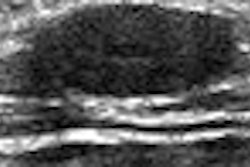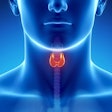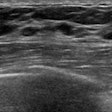Some views of the focused assessment with sonography for trauma (FAST) exam are more difficult to acquire and interpret than others, according to researchers from the University of Massachusetts Medical School in Worcester.
"The subxiphoid views are the most difficult to image, and were also the most difficult to interpret," said Dr. Anthony Montoya, an emergency medicine ultrasound fellow. He presented the team's research at the 2007 American Institute of Ultrasound in Medicine (AIUM) meeting in New York City.
Three different errors occur during FAST exams, including missed required images, poor imaging technique, and incorrect image interpretation, according to Montoya. Hypothesizing that each view of the FAST exam is characterized by different technical and interpretive errors, the research team performed a retrospective review of all FAST exams performed by emergency medicine and attending physicians from August 2004 to July 2005.
All participants attended an educational program that included lectures, hands-on tutorials, and image review, according to Montoya. Ultrasound exams were recorded on videotape and reviewed by one of two reviewers, who evaluated the study using two metrics: the inclusion of all images and image quality.
The researchers then assessed the image interpretation interobserver agreement between the initial examiner and expert reviewer.
Of the 1,060 FAST exams, 607 were trauma, 421 were nontrauma, and 32 were undetermined studies. Individuals who had completed 25 prior FAST exams performed 71.6% of the studies.
Seventy patients had free fluid on the FAST exam, including 13 in the subxiphoid (SX) view, 36 in the right upper quadrant (RUQ), 22 in the left upper quadrant (LUQ), and 27 in the suprapubic (SP) view. The study team also found additional free fluid in the chest in 14 patients.
Twenty-eight studies (2.6%) were misinterpreted, 20 of which were overcalls and eight missed free fluid. Of the FAST exams, 12.6% were missing at least one view, including the SP (5.5%), SX (4.53%), LUQ (2.45%), and RUQ (0.19%), Montoya said.
In addition, the SX, LUQ, SP, and RUQ views were uninterpretable in 5.3%, 4.1%, 3.4%, and 0.9% of the cases, respectively, according to the researchers.
The k values (95% confidence intervals) for each view when compared to the expert review were SX, 0.69 (0.48-0.89); RUQ, 0.91 (0.82-0.99); LUQ, 0.90 (0.83-0.98), and SP, 0.91 (0.83-0.99), according to the authors.
Interpretation differences between credentialed and noncredentialed sonographers were not statistically significant, Montoya said.
"Our data does not support the (performance of) 25 ultrasounds for professional credentialing, and there were really no differences in interpretation error rates," he said. "We did show that sonographers who were credentialed were more likely to show all four views of the FAST exam."
By Erik L. Ridley
AuntMinnie.com staff writer
July 20, 2007
Related Reading
FAST proves useful as triage tool in wartime, June 20, 2007
Experience beats speed in emergency FAST training, June 22, 2004
Copyright © 2007 AuntMinnie.com



















